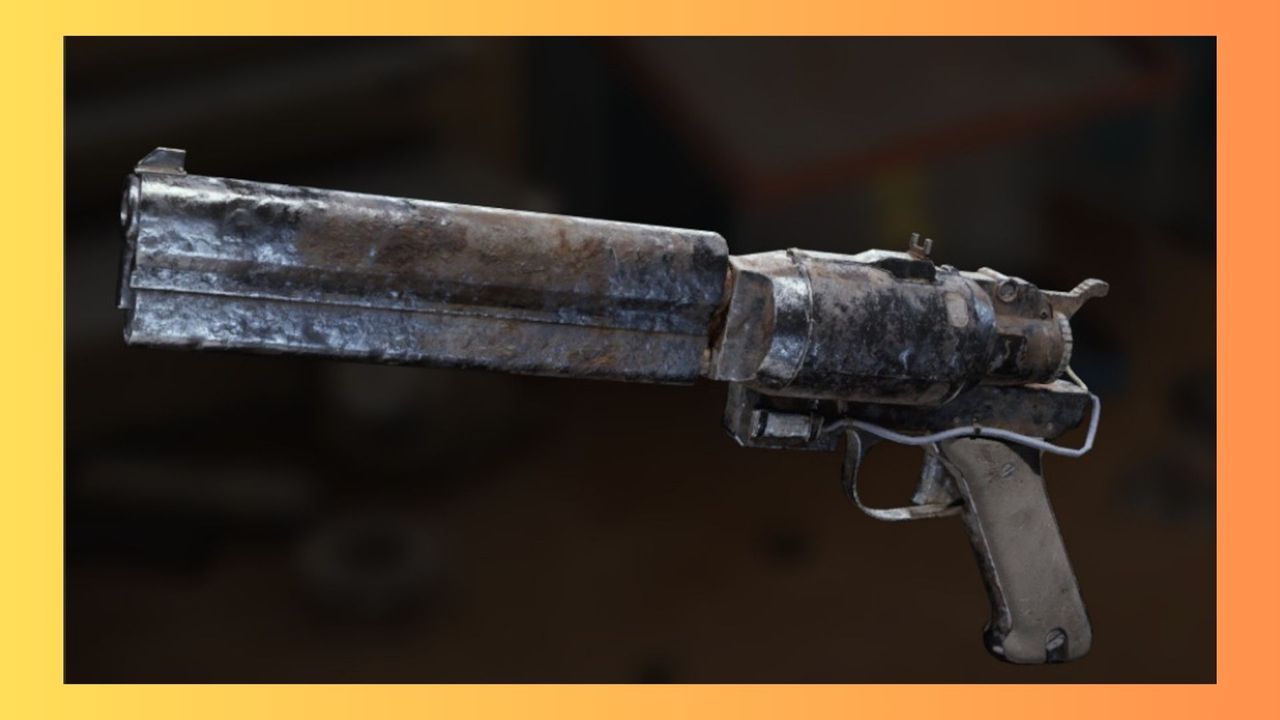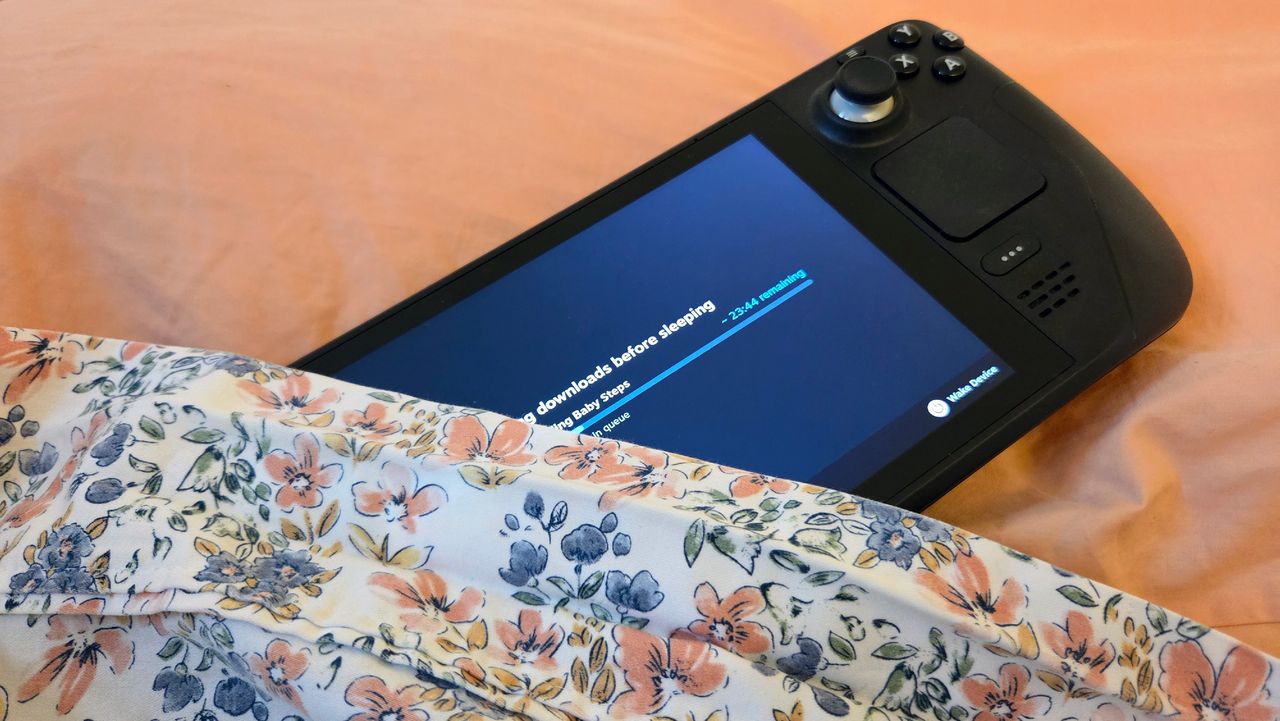
We’re in a golden age of portable gaming. Nintendo is still the king of the mountain with the Switch 2, but the market is also just lousy with handheld gaming PCs that you can play wherever you want. The fact that there are so many to pick from is a good problem to have, but once you’ve committed and freed yourself from the shackles of your TV, you’ll find you’re still bound by storage limits.
How you deal with those limits depends on what you’re after. If it’s more space for the likes of Battlefield 6, you’re better off cracking open your console – if you’re comfortable doing so – and upgrading your internal storage to a higher capacity M.2 NVMe SSD than you are popping in a MicroSD card. Proper SSDs are simply better at loading games up quickly.
Yet there’s still room for our humble friend, the MicroSD card. (That is, unless you did go with a Switch 2; in that case, you’ll be looking at a MicroSD Express card.) These little cards that could are fine for booting simpler indie titles and for holding your screenshots, screen recordings, and other files, thus freeing internal storage space for all those heaving open-world games the industry slings these days. Maybe they’re not reliable the way quality SSDs are, but they’re also easy to pop out, back-up to a PC, and put back in your console. As for picking one to use, that can be easy, if you know what you’re looking for.
Great, what should I look for in a MicroSD Card?
With storage, you need to be able to put the specs presented by manufacturers into a proper hierarchy. They love to trot out sequential read and write speeds of their cards because they’re the big throughput numbers. But you’ll rarely see those numbers in reality, especially if you’re transferring or loading game files, which are actually made of lots of smaller files – it takes time to spin up each of those files for transfer, and that creates a bottleneck. So, really, you want to know the random read and write speed of a card, which is a slower figure that, you may be shocked to hear, many manufacturers don’t explicitly publish. (Quick note here: Using words like “fast” and “slow” when discussing data transfer rates isn’t strictly the right way to go, but it’s a nice shortcut. Much of the time, in this context, when I write “faster,” I actually mean “higher throughput.”)
There is one way to get a vague idea about MicroSD cards’ random read and writes: by looking for their Application Performance Class (APC), signified on their labels by either an A1 or A2. In theory, an A2 rating means a card can handle, at minimum, 4,000 Input/Output Operations Per Second (IOPS) during random reads, and 2,000 IOPS during random writes. The trouble is, that’s really hard to confirm in testing, and if any reviewers successfully have done so, I haven’t found them. Still, whether cards are reaching that level or not, it’s a far cry from the million-plus IOPS you might get with an M.2 NVMe SSD. And it might not matter, anyway; MicroSD cards don’t need to be that fast if you’re just trying to get your Balatro reps in. Nevertheless, higher IOPS is better, especially when doing that first big transfer where you’re filling the card with data from your old one or from your SSD.
The picks in the guide below are based on personal experience with these brands, price of the cards, what performance testing I could find, and how they fit into the needs of a handheld gaming PC owner. Some of the test results I looked at also come from The Great MicroSD Card Survey, a project by tech enthusiast Matt Cole that has become a surprisingly deep catalog of real-world tests of MicroSD cards over the last couple of years. If I couldn’t find any tests that show random reads and writes for a given card, and the manufacturer doesn’t offer that spec up itself, then I didn’t bother considering the card at all.
1. Samsung Pro Plus MicroSDXC Card
Best MicroSD Card
When you’re looking for the truly best card, it’s a toss-up. I’m giving Samsung’s Pro Plus the nod here, based on promising results reported by Engadget, camera review site AlikGriffin.com, StorageReview, and The Great MicroSD Card Survey. But based on other impressions or results I found, I could have just as easily told you the SanDisk Extreme or the Lexar Professional Silver Plus is the card to get. All three cards offer similar performance, just with some clear strengths in one area or another. SanDisk’s card appears to be significantly weaker in random writes; Lexar’s seems about as good as Samsung’s, although reviewers I looked at found differing random read/write results. If I were looking for a card right now, I’m sure I’d be happy with any of them, but I’d be most tempted by the Samsung Pro Plus.
One thing to note here is that many cards, Samsung’s included, claim higher sequential read throughput than UHS-I allows. That’s only possible on handheld gaming PCs that, like the Asus ROG Xbox Ally X, feature UHS-I DDR200 mode support; and even that tops out at 170MB/s.
2. PNY Pro Elite Prime
Best Value MicroSD Card
PNY makes decent MicroSD cards priced lower than the high-end ones with little performance penalty. The company claims its Pro Elite Prime cards can do up to 200MB/s reads and 150MB/s writes when you’re using it with a PNY Performance Prime card reader, which I don’t remember seeing in any handheld gaming PC specs. (Presumably you could see them with any reader that supports DDR200 mode.) In testing for The Great MicroSD Card Survey, the PNY card put up similar sequential read and write numbers to the Samsung Pro Plus and SanDisk Extreme. Meanwhile, Digital Camera World saw better results, with it hitting 174MB/s sequential reads and 156MB/s sequential writes while using storage testing software CrystalDiskMark and a non-PNY MicroSD card reader.
The only place I found explicit tests of random read/write performance was Cole’s site, where he found that the PNY card was a few hundred IOPS slower than the Samsung Pro Plus. DCW mentions seeing performance almost as good as sequential reads in transfers of multiple small files, which could be a stand-in for random read/writes, but the methodology isn’t clear enough to me to say for sure. Whatever the case, PNY’s big advantage is affordability: Its 1TB card is just $69.99, for instance, while Samsung’s Pro Plus has been available at or under $100 from Amazon since late last year.
3. Amazon Basics
Best Budget 512GB MicroSD Card
Amazon Basics products might be a mystery product – house brands like this or Walmart’s Onn tend to be manufactured by the same people who make known brands – but they can be a great deal hiding in plain sight. Both Amazon’s and PNY’s 1TB MicroSD cards cost similar amounts, but Amazon’s 512GB card is priced to move, making it a great deal for handheld gaming PCs or just to have lying around (hopefully in a case or something; it’s way too easy to lose these little thumbnail-sized guys).
Wildly, when it comes to random read and write performance, Amazon’s cards seem to hold their own. Cole put a 64GB Amazon Basics MicroSD card at a very respectable 2,317 IOPS for reads, while systems admin Bret of Bret.dk found with some Linux Terminal commands and I/O testing software fio that the card was capable of much better – 3,775 IOPS reads and 3,533 IOPS writes, as of September 2022. Either tester’s result would be just dandy for a card so cheap.
How to Pick the Best MicroSD Card for You
It’s a nightmare going down into the MicroSD card specs rabbit hole. But the nice thing is that when it comes to buying one to expand the storage of your Asus Xbox ROG Ally X, Valve Steam Deck, or Lenovo Legion Go 2, you only really need to be concerned with the reputation of the card’s manufacturer and whether its random read and write speeds are decent. I’m not aware of any current MicroSD card manufacturer that actually publishes testing results along those lines, which makes it harder to know which one is best, but I also don’t think it really matters that much, so long as you’re buying a card with an A2 rating.
Now, that’s not because A2 magically means the card is really good – as I wrote before, it’s hard to verify whether that’s the case. But cards with an A2 rating, or at least the ones from reputable makers like SanDisk, Samsung, PNY, and Lexar, tend to be well-specced. Most of them carry a U-shaped symbol with a 3 inside it – indicating the card’s UHS Speed Class – and often also say “V30,” which is the highest SD Video Speed Class. These numbers are indirectly meaningful: They tell you that, yes, this card uses the UHS-I bus at least, which is capable of at least 104MB/s throughput.
Above that, things get a little complicated again. UHS-II, a newer MicroSD card bus standard, supports up to a 312MB/s read data rate, or three times that of UHS-I. But I couldn’t find any UHS-II cards given the A2 rating, so you might find that games load more slowly with them. That could change, but for the time being, even if you have a handheld like the UHS-II-supporting Xbox Ally X, you should stick with UHS-I for your MicroSD card.
I’ve never been sad to have too much space, but I’ve definitely been annoyed when I hit a storage wall of my own making. So, assuming you’ve got a list of MicroSD cards with an A2 rating and UHS-I bus support, all you have to do now is pick one. Easy, right? Honestly, mostly yes. Any of those from brands like SanDisk, Samsung, PNY, and Lexar will probably be good enough. You can narrow things down a bit more by doing things like looking for cards that have shown higher random read/write IOPS in reviewers’ tests, say if you think you’ll be transferring lots of small files to the card regularly. Also, if you’re getting the card just for indie game storage, you might not need much space, so you can pick something smaller. I will always argue for buying the most storage you can afford, though, even if that’s more than you think you need – I’ve never been sad to have too much space, but I’ve definitely been annoyed when I hit a storage wall of my own making. Feel free to go cheaper if price is an issue, but as it stands, the cheapest card worth paying for is in this guide right now. You should regard anything even less expensive that you find with conspiracy theorist-level suspicion.
The last bit of advice I would give you is to take even professional reviews with a grain of salt. There are so few reliable reviews in the first place, and even among them, methodology can be all over the place. It’s next to impossible to form a cohesive picture of one card’s performance, let alone several that you’re trying to decide between. Thankfully, you don’t really need to worry about that in the world of handheld gaming PCs, where it’s still mostly easy to swap out internal SSDs for AAA games and indie titles run fine on any decent MicroSD card you can find, as long as you stick to the guidelines above as you seek them out.
Wes is a freelance writer (Freelance Wes, they call him) who has covered technology, gaming, and entertainment steadily since 2020 at Gizmodo, Tom's Hardware, Hardcore Gamer, and most recently, The Verge. Inside of him there are two wolves: one that thinks it wouldn't be so bad to start collecting game consoles again, and the other who also thinks this, but more strongly.























